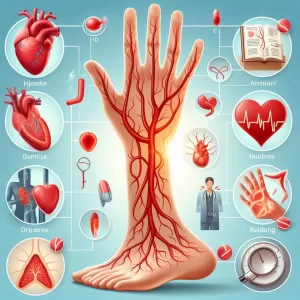Can exercise help endometriosis?
Endometriosis management includes taking medications and making lifestyle changes, such as exercising often. Although experts are still looking into this, certain kinds of exercise are often beneficial for people with endometriosis.

Endometriosis is a fairly common condition that results in painful periods, irregular menstrual bleeding, and infertility. It occurs when cells similar to the uterine lining spread outside of the uterus and into other parts of the female reproductive system. These could include the ovaries, cervix, or fallopian tubes.
There is currently no cure for endometriosis. Treatment plans typically include medication, surgery, and lifestyle changes to help manage symptoms.
Exercise may alleviate your symptoms and provide both direct and indirect benefits. However, research into the precise ways in which exercise relieves symptoms is ongoing.
Learn more about how exercise can help with endometriosis and get recommendations for some of the best workouts to discuss with your doctor.
Is exercise beneficial to people with endometriosis?
Doctors frequently recommend exercise, or physical activity, as a complementary treatment option for endometriosis.
In fact, the Office on Women’s Health recommends getting at least 4 hours
of exercise each week. According to the health agency, regular workouts can help balance your estrogen levels and reduce body fat. Both of these could worsen your endometriosis symptoms.
Other potential benefits of regular exercise, according to a 2021 review
include beneficial effects on your physical and mental health. These could also be indirect effects. Although exercise may not have a direct effect on endometriosis, you may feel more in control of it.
The authors of the same review noted that, while some previous studies found that exercise reduces pain and stress, it is still unclear how it directly affects endometriosis.
A separate 2021 systematic review
suggested that exercise could help “pain perception” related to endometriosis because of its effects on inflammation. However, the authors also said there’s not enough evidence to support exercise as a pain-relieving method for this condition.
As a 2023 study
found that physical activity levels were lower in those with endometriosis than in control groups. Here, researchers hypothesized that painful periods and depression contributed to lower rates of exercise and even increased the risk of cardiopathie.
Also, despite the exercise recommendations that health experts make for people with endometriosis, it can be difficult to start an exercise program if you don’t feel well. The key to benefiting from exercise with endometriosis is finding a program you can stick with.
Possible exercises that may benefit your endometriosis include:
What exercises should you avoid with endometriosis?
Although exercise may reduce estrogen, improve your mood, and boost your overall physical health, there are still some caveats to consider when starting a workout program with endometriosis.
A more recent 2023 review
advised people with endometriosis to avoid intense exercises, suggesting that these could worsen symptoms. Examples of vigorous activities that you may want to consider avoiding include:
Also, it’s important to keep in mind that what’s considered an “intense” exercise is highly subjective, especially if you’re new to working out. This is why it may be beneficial to speak with a doctor before getting started with an exercise program for endometriosis.
When to stop an exercise
Stop exercising immediately and seek medical help if you experience any of the following:
What else can help with endometriosis symptoms?
Currently, there’s no cure for endometriosis. Medical treatments and lifestyle changes can help you manage this condition.
Aside from exercise, a doctor may suggest these other ways you can help manage your endometriosis symptoms:
Emporter
Although doctors don’t consider it a stand-alone treatment measure, exercise may help complement your overall endometriosis management plan. It can help boost your mood, decrease your estrogen levels, and reduce any underlying inflammation.
More research is needed to confirm if exercise definitively has direct effects on endometriosis symptoms, such as pain.
In the meantime, it’s worth talking with a doctor about getting started with an exercise program. Above all else, finding an activity that makes you feel good will increase your chances of sticking with it in the long term.
2 commentaires
Laisser un commentaire
Articles populaires








Hi everyone,
I’ve been suffering from endometriosis for a number of years now and I’m finding it really difficult to manage. I’ve tried a number of different treatments, but nothing seems to work. I’m really struggling with the pain and it’s starting to affect my quality of life.
I’ve read that exercise can help to reduce the symptoms of endometriosis, but I’m not sure if this is true. Has anyone else tried exercising to help their endometriosis? Did it help?
Any advice would be greatly appreciated.
**Can exercise help endometriosis?**